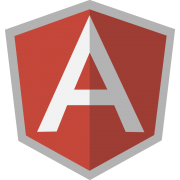Client Code Structure, Part 3: Organization
Now that our code is split into Models and Controllers it is much easier to read, maintain, and debug. I thought that I could take it one step further, however. Once again, I pulled from my old ActionScript standards and split each file into the following sections:
- Model Files
- Property Initialization
- That’s all (You expected more?)
- ViewModel Files
- Injectables
- Inheritance
- Scope Initialization
- UI Event Handlers (Handles events from the view)
- Application Event Handlers (Handles events from $rootScope)
- General helper functions
- Code that runs when the view is created
- Controller Files
- Injectables
- Application Event Handlers
- Result Handlers
- Fault Handlers
- General helper functions
- Code that runs when the app loads
See the example below:
divisionModule.factory('DivisionController',
[
/**************************************
***
*** Injectables
***
**************************************/
'$rootScope',
'DivisionModel',
'DivisionService',
function ($rootScope, DivisionModel, DivisionService) {
/*********************************
***
*** Application Event Handlers
***
*********************************/
function divisionSelectedHandler(event, division) {
DivisionModel.selectedDivision = division;
}
$rootScope.$on('divisionSelected', divisionSelectedHandler);
/********************************
***
*** Result Handlers
***
********************************/
function getDivisionsResultHandler(result) {
//Apply the result
DivisionModel.divisions = result;
$rootScope.$emit('divisionSelected', selectedDivision);
}
/********************************
***
*** Fault Handlers
***
********************************/
function getDivisionsFaultHandler(fault) {
//Handle faults
}
/******************************
***
*** Helper Methods
***
******************************/
function getDivisions(){
DivisionService.query(queryParams, getDivisionsResultHandler, getDivisionsFaultHandler);
}
/******************************
***
*** Code that runs on startup
***
******************************/
getDivisions();
}
]
);Now, if there is a problem in the application somewhere, not only do we know exactly which file to look at, we also know which section of the file to look at.



